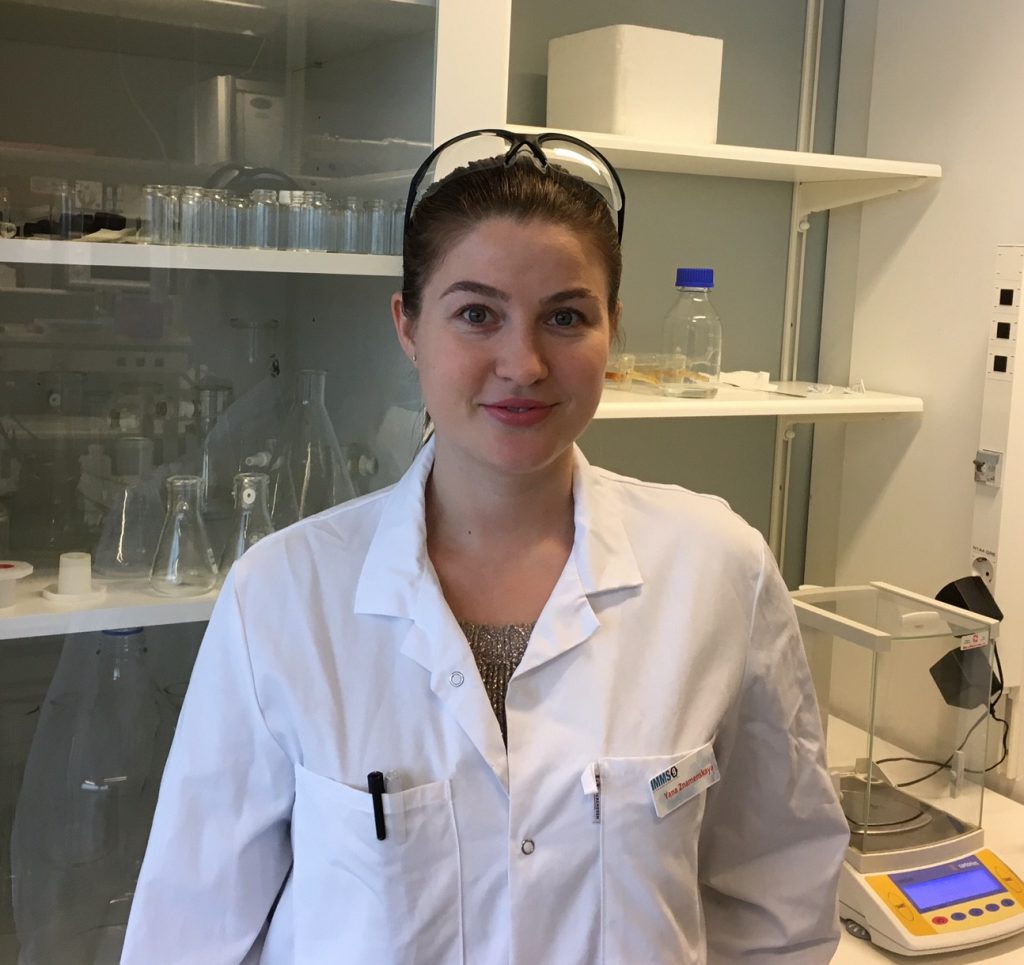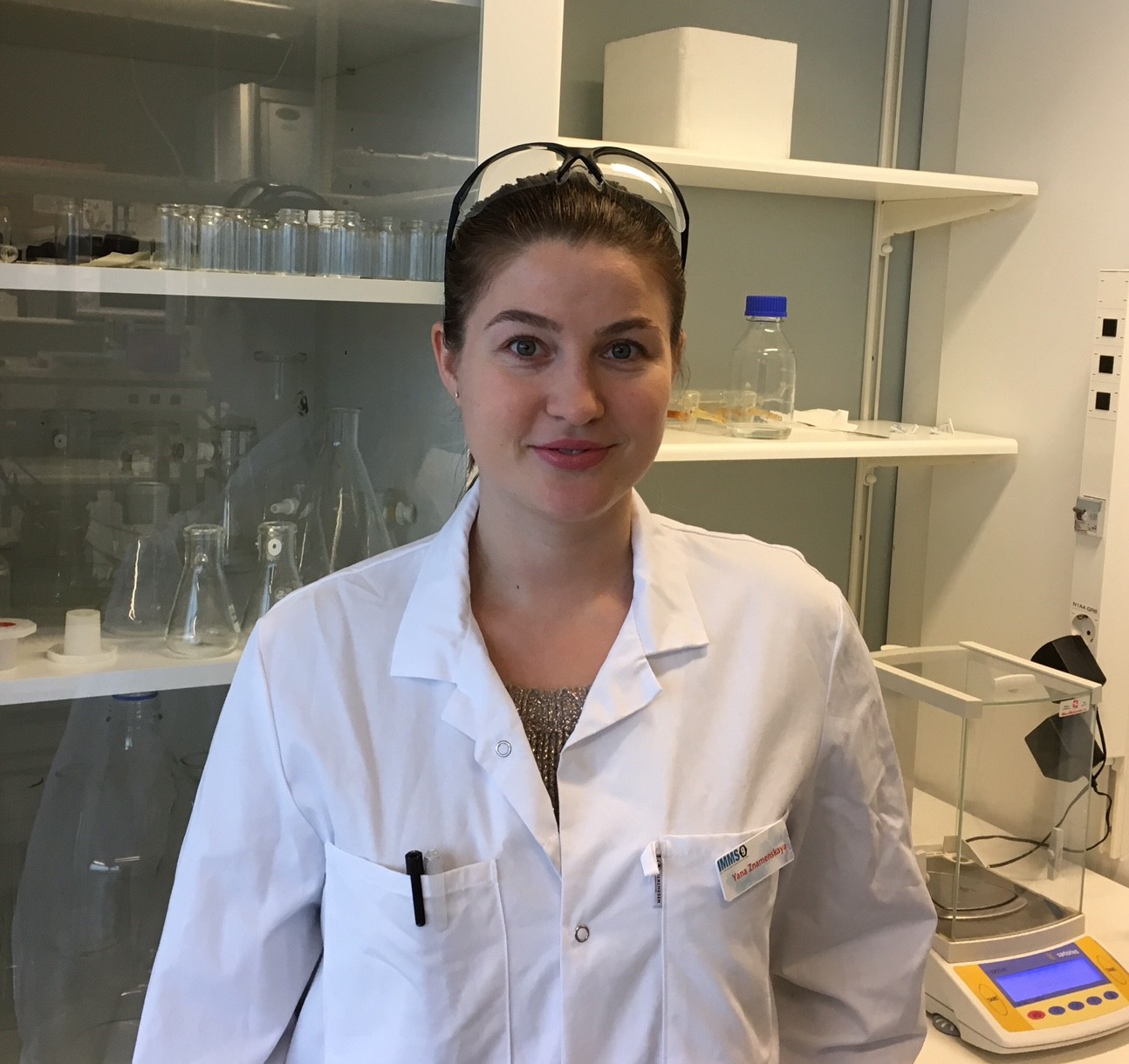
Experiment with focus on mucin
In 2009 Yana Znamenskaya Falk moved to Sweden for a PhD study at Malmö University. In her PhD Yana chose to focus on the effect of hydration on the structural, thermodynamic and rheological properties of biopolymer mucin, which is a main component of mucus. Mucus is a slippery secretion produced by, and covering, mucous membranes. Yana is currently working at Biofilms, Research Center for Biointerfaces, at Malmö University where she has continued her research study on mucin. In 2016 Yana participated in an experiment project within MAX4ESSFUN.
Yana explains that mucus consists primarily of water (95%), the glycoprotein mucin and other components and it can be found in all internal tracts of the body, f. ex. the mouth, nose, throat, sinuses, stomach and lungs. One of the essential functions of the mucous gel is protection of tissues against dehydration (drying). In order to fulfil this function, the mucous gel should be strongly hydrated, i.e. it should contain a large amount of water.
– In my PhD it was very interesting to investigate properties of native tissues, especially how the highly hydrated layer covering the mucosal surfaces of our body might be affected by changes at ambient condition. Understanding this can be relevant for areas like biomaterial coatings and drug delivery.
Fruitful collaboration between Malmö and Aarhus University
One of the tasks of Yana´s research study has been to investigate how much water mucin could contain at different humidity levels, and what the effect is on mucin properties when humidity level is changed. For example, to get information about dependence of mucin phase behaviour from water content in the system, i.e. at which humidity levels a transition from glassy to elastic state occurs. In particular, dehydration changes the protective properties of the mucous gel and may become a pathogenic factor in many diseases such as cystic fibrosis, asthma, and gastric carcinoma. In order to avoid this, a further understanding of the mucin properties in mucous gel is required. Pig gastric mucin, which is very similar to human tissues, has been used for the samples. Another task has been to study how the structural properties of mucin are affected by hydration.
– In our Interreg project we did not apply for any experiments, as we had many X-ray data on mucin system, collected in Max lab, and it was important to evaluate them and to model the system. Mucin is a complex molecule, and its structure is yet to be defined. Therefore, we would like to know what type of structure pig gastric mucin has.
According to Yana the Interreg project has been very important to get forward in understanding how the mucin system works.
– Thankfully, to the Interreg project, I got the opportunity to not only meet but also collaborate with one of the world famous and brilliant scientist – Professor Jan Skov Pedersen, who can model any system. I also had the opportunity to travel to Aarhus University, to see their laboratory, experimental instruments and got to know Professor Pedersen´s group. I met a new contact there for powder diffraction experiments, which also can be useful in the future.
Future possibilities
In her research Yana is ready to use X-rays and applying for beam time at MAX IV would be a great step forward. Yana finishes her postdoc in April 2017, and what happens next depends on future funding.
– I definitely think MAX IV and ESS will be important and useful facilities that will attract many brilliant scientists. If I stay in academia, there is no doubt that I will apply for a beam time there to investigate my samples.
Another future alternative could be to work within industry. Yana has already been in contact with pharmaceutical companies in Germany during her research.
– I think I would like to work in industry after my postdoc to be able to compare academic and industrial environments. I prefer to stay in Scandinavia, but you never know.
Text and interview: Kristina Sandberg Hrbinic
Short facts:
![]()
Young researcher: Yana Znamenskaya Falk
Experiment: Structure of pig gastric mucin at wide range of water contents and temperature
Experiment period: 2016-07-01 – 2016-12-31
Supervisor: Vitaly Kocherbitov, Malmö University
Co-supervisor: Jan Skov Pedersen, Aarhus University
